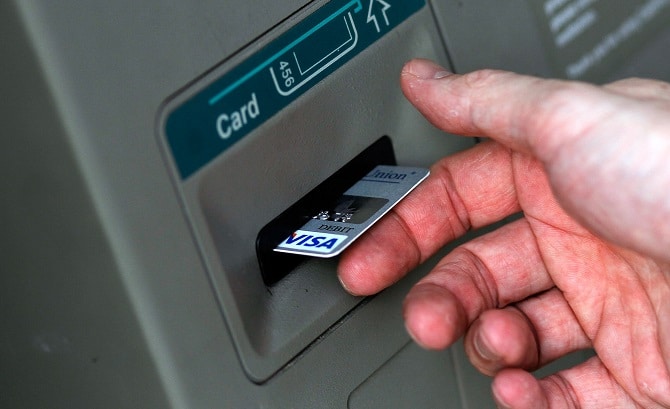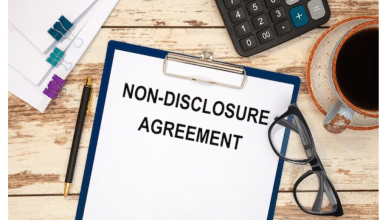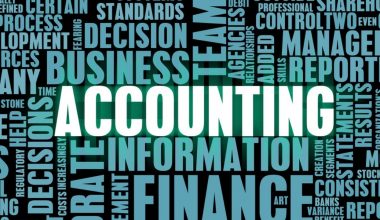ATMs have become a ubiquitous part of our lives. We use them to withdraw money, make deposits, check our balances, and pay bills. For many people, ATMs are a reliable and convenient way to access cash. But it’s different for people who need to buy one. In this article, we will cover what you need to know before buying one. How much ATM machines cost and more.
What Is an Automated Teller Machine (ATM)?
Automatic teller machines (ATMs) are online banking locations that let customers do transactions without visiting a bank branch.
Many operations, including check deposits, balance transfers, and bill payments, are possible with certain ATMs, while others are just straightforward cash dispensers.
The world now has more than 2 million ATMs, with the first ones emerging in the middle to late 1960s.
Modern ATMs are technological wonders that can perform a variety of banking tasks, including receiving deposits.
Use an ATM with your own bank’s branding as frequently as you can to reduce ATM costs.
Types of ATM Machines
ATMs come in two main types. Customers only have access to cash withdrawals and account balance updates in basic units. The more sophisticated machines enable line of credit payments and transfers, receive deposits, and access account data.
A user frequently needs to have an account with the bank that runs the machine in order to access the advanced capabilities of the complicated devices.
Experts predict that the number of ATM withdrawals will rise as ATMs become ever more widely used. Future ATMs are probably going to be full-service machines, either in place of or in addition to conventional bank tellers.
ATM Machine Business
ATMs are machines that allow customers to withdraw cash from their bank accounts. They are usually located in public places, such as banks, shopping centers, and convenience stores. It is estimated that there are more than 3 million ATMs worldwide, and the number is growing.
The ATM business is a multi-billion dollar industry. It is estimated that the global ATM market will reach $29 billion by 2025. This growth is being driven by increasing demand for convenience, improving technology, and the growth of the banking industry.
While the ATM business can be profitable, it is not without its risks. ATMs must be managed carefully to ensure that they are secure and that customers are not subject to fraud. Additionally, ATMs must be supplied with cash, which can be costly and time-consuming.
How Much Are ATM Machines
The cost of an ATM machine can vary depending on the type of machine and its features. A basic ATM machine can cost anywhere from $1,000 to $5,000. Higher-end machines can cost up to $20,000 or more. Additionally, there are other costs associated with setting up and running an ATM business, including installation, maintenance, and cash supply costs.
When purchasing an ATM machine, it is important to consider the features you need. For example, some ATMs accept debit and credit cards, while others only accept cash. Additionally, there are machines that offer additional services, such as check cashing and money transfers. The cost of the machine will depend on the features you need.
Owning an ATM
ATMs are frequently owned by banks and credit unions. Yet it’s also possible for people and companies to own or lease ATMs on their own or through an ATM franchise. The financial strategy for ATMs owned by individuals or small businesses, such as restaurants or petrol stations, is dependent on charging fees to customers.
ATMs owned by banks are used for this purpose. They draw customers by offering the ease of an ATM. Moreover, ATMs relieve bank tellers of some customer service duties, saving banks money on payroll expenses.
What to Know When Buying an ATM Machine
When buying an ATM machine, there are a few things to consider. First, you need to decide which type of machine is best for your needs. There are two main types of ATMs: on-premise and off-premise. On-premise ATMs are located at a bank or other financial institution. Off-premise ATMs are located in public places, such as convenience stores or shopping centers.
You also need to consider the features you need. Some machines offer additional services, such as check cashing and money transfers. Other features, such as cash recycling and card reader technology, can make the machine more efficient and secure.
Finally, you need to make sure the machine is compliant with regulations and industry standards. This is especially important if you are buying a used machine.
Where to Put ATM Machines
Where you put an ATM machine will depend on the type of machine you have. On-premise ATMs are typically located at banks and other financial institutions. Off-premise ATMs can be placed in a variety of locations, including convenience stores, shopping centers, airports, and other public places.
When choosing a location, it is important to consider factors such as foot traffic, security, and the cost of installation. Additionally, you need to make sure the location meets local regulations and industry standards.
How Much Is an ATM Machine Cost?
The price of an ATM can range from $1,000 to $10,000, depending on whether you purchase a new or used machine. Even though buying a secondhand computer is less expensive, consumers may be less likely to use it because they are typically slower and appear older.
There are many sorts of ATMs to take into account, including countertops and freestanding ones. The type also has an impact on cost.
Also bear in mind that if you purchase an ATM, you will be in charge of maintaining the device, including ensuring that it is operational and keeping it supplied with cash. Fortunately, ATMs are very dependable and have a 12- to 24-month components warranty. To be on the safe side, it is a good idea to set aside $200 to $300 a year for ATM maintenance or repairs.
Purchasing your own ATM can be quite beneficial if you can average between 15 and 30 transactions per month. It’s a fantastic secondary source of income and might provide an extra $20,000 to $30,000 a year.
How Do ATM Machines Owners Make Money?
ATM owners make money in two main ways. The first way is through surcharges. A surcharge is a fee that is charged to customers for using the ATM. The ATM owner usually takes a certain percentage of the amount taken out as this fee.
The second way ATM owners make money is through transaction fees. These are fees charged by the ATM owner to the customer’s bank for each transaction. These fees are typically small but can add up over time.
Can I Start My Own ATM Business?
Yes, you can start your own ATM business. To do so, you will need to obtain the necessary licenses and permits. You will also need to purchase the ATM machine, install it in a suitable location, and set up a cash supply. Additionally, you will need to make sure the machine meets local regulations and industry standards.
How Do ATMs Get Refilled?
ATMs are typically refilled with cash on a regular basis. This is usually done by a cash-in-transit service, which is a company that specializes in the transportation of cash. The cash-in-transit service will deliver the cash to the ATM and replenish the machine.
Where Is the Best Place to Put an ATM Machine?
For shops, financial institutions, the hospitality sector, the gambling sector, and other businesses, ATMs can significantly boost income. Let’s examine some examples of the firms, sectors, and places where ATM placement is most effective.
Banks
People frequently look for ATMs in banks, credit unions, and other financial institutions first. Many people with checking accounts or other types of bank accounts visit their neighborhood bank whenever they need to withdraw money.
Clubs and Bars
Owners of nightclubs and bars who have an ATM on site generally earn significantly more money, both through surcharge fees and from the fact that patrons who have access to cash spend more money in the bar.
Hotels
For a variety of reasons, hotel guests nearly always need cash. An on-site ATM is a fantastic way for hotel owners to increase their revenue from transaction fees and motivate visitors to spend more money at the hotel.
Food Markets
Many consumers would rather pay with cash for their groceries than a credit card or debit card. Others appreciate the ease of using supermarkets as a “one-stop-shop” for all of their needs while they are out and about. Both demands are met and most store owners’ profit margins are increased when a grocery store offers an on-site ATM.
Petrol Stations
One of the most popular locations where consumers hunt for ATMs is at gas stations and convenience stores. Giving customers access to cash is a terrific method to boost sales while assisting on-the-go customers.
Events and Festivals
Attendees frequently require more funds for huge events like festivals. By granting them access to ATMs, you’ll encourage them to make larger purchases from vendors and keep them on the property longer.
Casinos
Casinos Customers spend more money at casinos when you keep them there longer. One of the easiest ways to do this is to provide them with easy access to extra money.
How to Get an ATM Franchise?
An ATM franchise is a business model where an individual or business purchases the right to operate an ATM machine. The franchisee is responsible for the installation, maintenance, and cash supply of the ATM machine.
To get an ATM franchise, you will need to contact a franchisor. The franchisor will then assess your qualifications and determine if you are a good fit for the franchise.
What Will Replace ATM Machines?
The future of ATMs is uncertain. With the rise of digital payments, it is likely that ATMs will become less popular in the future. However, it is still unclear what technology will replace them.
One possibility is contactless payments. This technology allows customers to make payments using their smartphones or other devices. Additionally, new technologies, such as blockchain, could make payments more secure and efficient.
Conclusion
Automated teller machine, or ATM. These are electronic banking facilities that let customers do transactions without visiting a bank branch. Some ATMs let you do a lot of things, like deposit checks, move money between accounts, and pay bills. Others, on the other hand, just give you cash. ATMs are an essential part of our lives. They are convenient, reliable, and secure. Before buying an ATM machine, it is important to consider factors such as the type of machine, features, cost, and location. Additionally, there are other costs associated with setting up and running an ATM business. With the right preparation and knowledge, anyone can start their own ATM business.
- How to Start an ATM Business: Is it Profitable or Not?
- HOW TO START AN ATM BUSINESS IN 2023: The Ultimate Guide
- CRYPTO ATMS: Are They Legit & How do they Work? (Detailed Guide)
- CASH MACHINES: Meaning, Types & Comparisons
- How Much Can You Take Out of An ATM? ATM Withdrawal Limits






